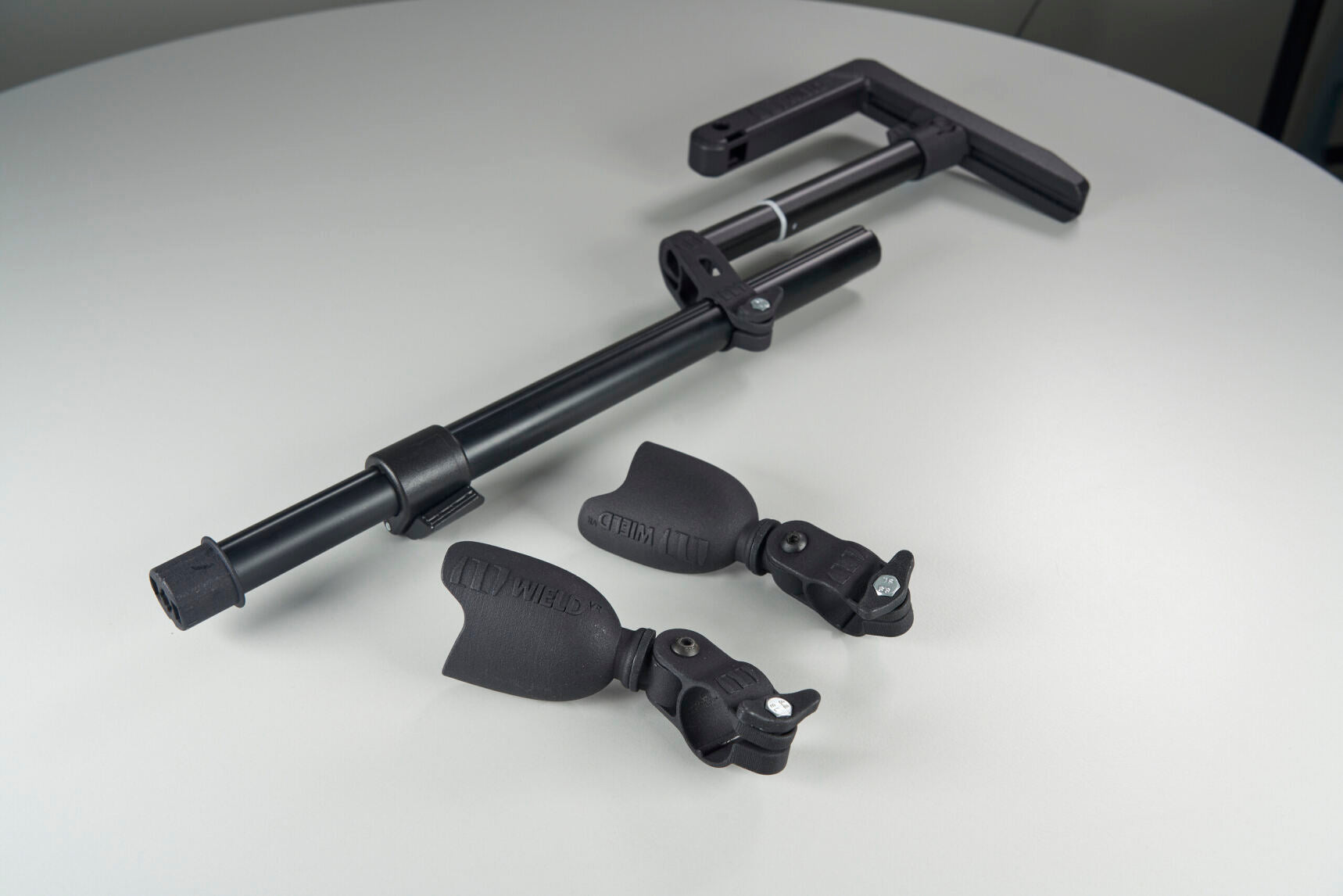A VR stock is a physical accessory that holds your VR controllers in a rifle-like configuration, providing stability and muscle memory for superior aiming precision in first-person shooters. It's not just an add-on; it's a critical piece of hardware for any player serious about competitive VR FPS games, transforming inconsistent aiming into a repeatable, physical skill.
What Exactly is a VR Stock?
Beyond a Simple Accessory: A Precision Tool
Think of a VR stock as the bridge between the virtual weapon on your screen and your physical body. Holding two controllers freely in the air introduces variables—shake, inconsistent positioning, and fatigue. A VR gun stock eliminates those variables by creating a stable, physical rig. It’s the equivalent of a racing wheel for a sim racer or a flight stick for a pilot; a specialized tool engineered for one purpose: peak performance.
The Core Components of a VR Stock
A high-performance VR stock isn't just a piece of plastic. It's a system designed for stability and feel. The core components include:
- Shoulder Rest: The anchor point. This provides the third point of contact (along with your two hands) that is fundamental to stable aiming.
- Controller Mounts: These are the interface between your controllers and the frame. Their design—whether magnetic or mechanical—dictates the rigidity of the entire system.
- Adjustable Frame: The chassis that connects everything. Adjustability here allows you to perfectly replicate the feel of different weapon classes, from a compact SMG to a long-barreled sniper rifle.
The Tactical Advantage: How a VR Stock Improves Gameplay
Unshakable Aiming Stability
The single greatest advantage of a VR stock is the creation of a stable aiming platform. By bracing the stock against your shoulder, you eliminate the micro-tremors and arm fatigue that cause your virtual sights to drift. This means tighter shot groupings at range and the confidence to take shots you'd otherwise miss.
Building Real-World Muscle Memory
With a VR stock, your body learns the exact position of your weapon. Aiming down sights becomes an unconscious, physical action, not a visual search. You build muscle memory for a consistent cheek weld and sight picture. This translates to faster target acquisition and more intuitive snap-aiming. Your body knows where the reticle is before your eyes even confirm it.
Faster, More Consistent Reloads
In the heat of a firefight, fumbling a reload gets you killed. A stock provides a fixed physical reference point, guiding your hands together for faster, more reliable reloads, chambering rounds, or manipulating a bolt. You aren't guessing where your other hand is; you are bringing it to a known physical location. Every time.
Key Features of a High-Performance VR Stock
Material and Build Quality
The materials define the rig's performance. Flimsy construction leads to flex, which completely defeats the purpose of using a VR stock in the first place. It introduces inconsistency where you're trying to eliminate it.
Carbon Fiber vs. Anodized Aluminum
These are the premier materials for a reason. Carbon fiber offers supreme rigidity at a minimal weight, while anodized aluminum provides a robust, metallic feel with excellent durability. Both are engineered for lightweight endurance that outlasts marathon gaming sessions.
Adjustability is Non-Negotiable
A one-size-fits-all approach is a fatal flaw. A high-performance VR gun stock must be fully adjustable. This includes:
- Length of Pull: Adjusting the distance to the shoulder rest for a perfect, custom fit.
- Controller Position: Shifting mounts to match the ergonomics of different in-game weapons.
- Cheek Weld Height: Aligning your eye perfectly with the virtual sights, every single time.
This isn't for comfort; it's for creating a tailored weapon system that becomes an extension of your body.
Ergonomics and Weight Distribution
A well-designed stock feels balanced and nimble, not front-heavy and clumsy. Poor weight distribution slows your reaction time as you fight the inertia of the rig itself. Look for a design that centers the mass, allowing for rapid, fluid transitions between targets.
Understanding Mounting Systems: Speed vs. Stability
The Magnetic Mount System
Magnetic mounts use powerful magnets to snap controllers into place. They offer excellent speed for actions like reloading or throwing grenades. However, this convenience can come at the cost of stability, as strong forces can sometimes cause wobble or detachment. It's a popular system that prioritizes quick-release functionality.
The Mechanical Lock-In System
An alternative approach focuses on absolute stability through precision engineering. These systems use controller mounts that are perfectly molded for a secure friction fit. The connection is firm and reliable, eliminating play and wobble without the complexity of moving parts. The WieldVR OneStock uses a precision-fit system, ensuring a rock-solid connection between the controller and the frame. This design makes it a popular choice among competitive VR players who demand unwavering stability and a consistent feel.
The Verdict for Competitive Play
While magnets offer speed, competitive play hinges on consistency. Any amount of play between the controller and the stock introduces a variable that can cost you a critical shot. For this reason, a stable, non-wobble connection, like that provided by a precision-fit system, is the superior choice for players focused on maximum accuracy and control.
Is a VR Stock Worth the Investment for You?
The Casual Player vs. The Competitive Operator
If you primarily play puzzle games or single-player adventures, a VR stock is a great tool for immersion, but not essential. However, if you live in VR FPS titles like Pavlov, Onward, or Contractors—if you track your K/D ratio and actively work to improve your skill—then a VR stock is not an accessory. It is a fundamental piece of your loadout.
The Bottom Line: From Add-On to Essential Gear
Stop fighting your own body's limitations. A quality VR stock removes the guesswork and instability from virtual gunplay. It allows you to translate your raw skill into consistent, dominant in-game performance. It is the most significant hardware upgrade you can make to gain a real, tactical advantage in the virtual arena.


